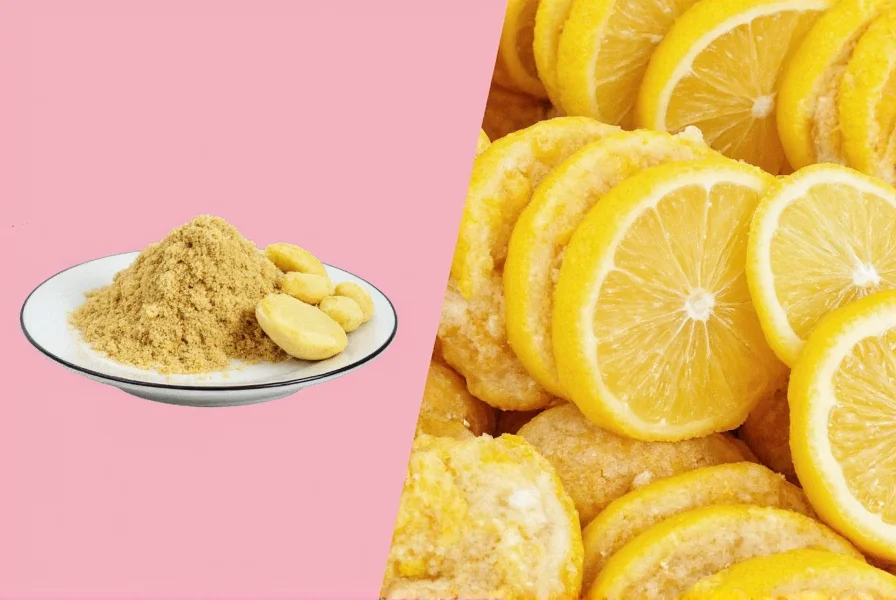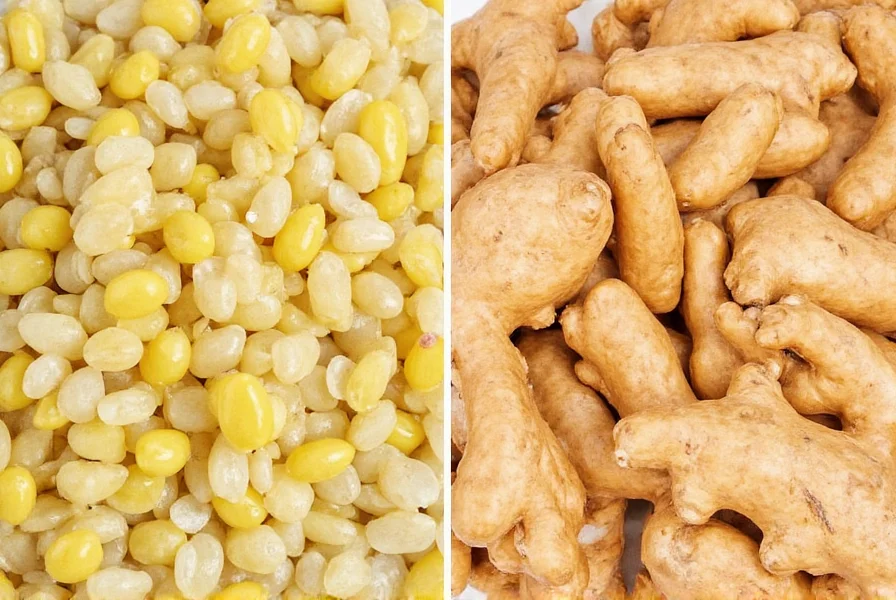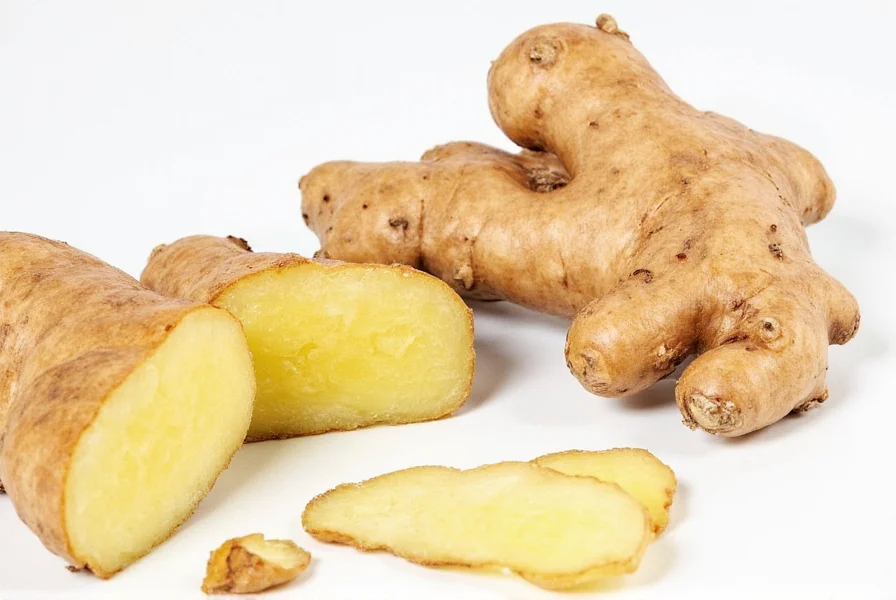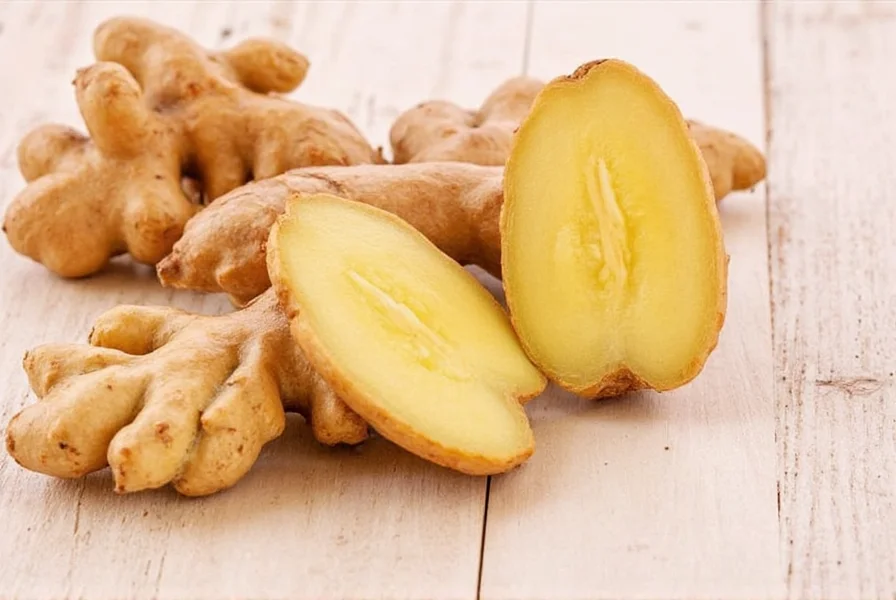Need to replace ginger? Whether you're out of stock, allergic, or simply exploring new flavors, these 7 proven alternatives will save your recipe with exact measurements, flavor insights, and cooking tips. Discover the best substitutes for any dish — from turmeric to galangal — with step-by-step guidance for perfect results every time.
The Best Substitutes for Ginger
Here are the top 7 ginger replacements with precise usage guidelines:
- Turmeric: Earthy and mild. Use half the amount of ginger. Best for curries and golden milk.
- Fresh Galangal: Peppery and sharp. Use equal amounts. Ideal for Thai soups and curries.
- Ground Cumin: Warm and smoky. Use 1:1 ratio. Perfect for Mexican and Middle Eastern dishes.
- Citrus Zest (Lemon/Lime): Bright and tangy. Use zest from half a fruit per tbsp ginger. Great for seafood and desserts.
- Garlic: Savory and pungent. Use half the amount. Works in stir-fries and marinades.
- Cinnamon: Sweet and woody. Use 1:1 for baking. Best in desserts and chai tea.
- Cardamom: Floral and complex. Use half the amount. Ideal for rice dishes and baked goods.
| Substitute | Flavor Profile | Heat Level | Best For | Usage Tip |
|---|---|---|---|---|
| Turmeric | Earthy, mild, slightly bitter | Low | Curries, soups, rice dishes | Use sparingly; color stains easily |
| Galangal | Pungent, peppery, pine-like | Medium-High | Thai curries, tom yum soup | Best when grated or thinly sliced |
| Cumin | Warm, nutty, smoky | Low-Medium | Middle Eastern, Mexican dishes | Dry roast seeds before grinding for more aroma |
| Citrus Zest | Refreshing, bright, tangy | None | Baked goods, seafood, sauces | Add last minute to preserve freshness |
| Garlic | Pungent, savory, sharp | Low | Asian stir-fries, marinades, broths | Use half the amount of ginger called for |
| Cinnamon | Sweet, woody, aromatic | Low | Apple pies, oatmeal, chai tea | Best in desserts and warm beverages |
| Cardamom | Floral, spicy, citrusy | Low-Medium | Rice pudding, chai, biryani | Use pods or grind as needed |
When to Use Which Substitute
- For Heat & Spiciness: Galangal or cayenne + cumin
- For Earthy Warmth: Turmeric or cinnamon
- For Citrus Kick: Lemon/lime zest in seafood or sauces
- For Umami Depth: Garlic in stir-fries and broths
- For Desserts: Cardamom or cinnamon in baked goods

Buying Guide: Choosing the Right Replacement
Focus on quality and usage context:
Turmeric
- Best For: Curries, golden milk, rice dishes
- Tip: Choose organic for better color and potency
Galangal
- Best For: Thai tom yum, red curry paste
- Tip: Look for firm, smooth roots at Asian markets
Cumin
- Best For: Tacos, tagines, lentil stews
- Tip: Buy whole seeds and grind fresh for maximum aroma
Citrus Zest
- Best For: Seafood, salad dressings, cakes
- Tip: Use organic lemons/limes to avoid pesticides
Garlic
- Best For: Stir-fries, pasta sauces, roasted veggies
- Tip: Minced fresh garlic works better than powder
Cinnamon
- Best For: Oatmeal, apple pie, mulled wine
- Tip: Ceylon cinnamon is milder and higher quality
Cardamom
- Best For: Rice pudding, chai, biryani
- Tip: Buy whole pods and grind as needed for best flavor
Frequently Asked Questions
What's the closest substitute for fresh ginger in terms of flavor?
Galangal is the closest relative with a similar but sharper, peppery profile. It's essential for authentic Thai dishes where ginger is typically used.
Can I use ground ginger instead of fresh ginger?
Yes, but adjust measurements: 1/4 tsp ground ginger = 1 tbsp fresh ginger. Ground ginger has a more concentrated, slightly different flavor.
What's the best ginger substitute for baking and desserts?
Cinnamon or cardamom work best for sweet applications. Cardamom adds floral complexity to cakes, while cinnamon shines in apple-based desserts and oatmeal.
How much of a substitute should I use compared to ginger?
Turmeric: 1/2 the amount. Galangal: same amount. Citrus zest: zest from half a lemon/lime per tbsp ginger. Garlic: half the amount. Cinnamon/cardamom: 1:1 for baking.
Can I make ginger tea without ginger?
Absolutely! Try turmeric "golden milk" (with milk and black pepper), cinnamon-lemon tea, or cardamom tea for similar warming effects.
Is galangal the same as ginger?
No. Galangal has a sharper, pine-like flavor compared to ginger's warm spiciness. It's commonly used in Thai cuisine but harder to find.
Can I omit ginger completely from a recipe?
You can, but consider adding a small amount of acid (lemon juice) or another aromatic spice to maintain flavor complexity. Omitting entirely may reduce depth.
Recipes Without Ginger? No Problem!
Test these substitutes with these simple recipes:
Lemony Turmeric Chicken Soup
- Ingredients: Chicken breast, carrots, onion, turmeric, lemon juice, garlic, vegetable broth
- Instructions: Sauté onion and garlic, add chicken and veggies, sprinkle in turmeric, pour in broth and simmer. Finish with lemon juice for brightness.
Thai-Inspired Galangal Shrimp Stir-Fry
- Ingredients: Shrimp, bell peppers, snow peas, galangal, soy sauce, sesame oil, chili flakes
- Instructions: Stir-fry shrimp with chopped galangal first, then toss in veggies and sauce. Serve over jasmine rice.
Cinnamon Apple Oatmeal
- Ingredients: Rolled oats, almond milk, cinnamon, honey, apples, walnuts
- Instructions: Cook oats with milk and cinnamon, top with sautéed apples and nuts for a cozy breakfast.

Conclusion
While nothing replaces ginger's unique character, these 7 substitutes deliver exceptional results when used correctly. Remember: galangal for Thai dishes, turmeric for golden hues, and cinnamon/cardamom for desserts will transform your cooking without missing a beat.
Experiment fearlessly — cooking is about creativity. Raid your spice rack and discover new flavor combinations today!












 浙公网安备
33010002000092号
浙公网安备
33010002000092号 浙B2-20120091-4
浙B2-20120091-4